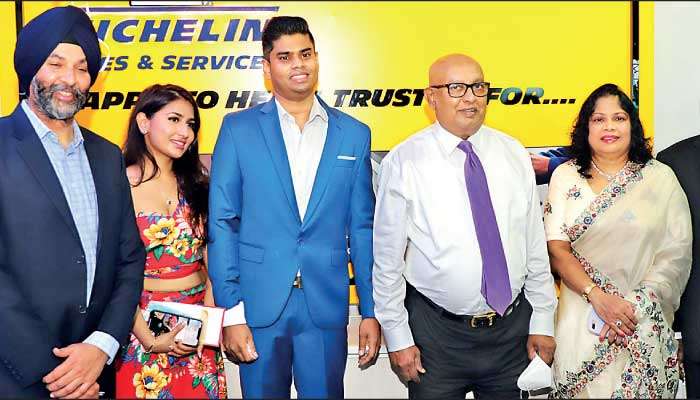Andrew Alianan, Cherrie Atilano and Jan de Leon – PHOTOS CONTRIBUTED
At the 16th Annual Mansmith Young Market Masters Awards (YMMA), we asked three of the marketing rock stars to share their ideas on product or service concept innovation. They are: Andrew Alianan, Marketing Director at North Ridge Foods / YMMA Awardee for Export Marketing; Cherrie Atilano, founder of AGREA / YMMA Awardee for Advocacy Marketing; and Dr Jan de Leon, Director of Studies and Services at the Dr Carl E. Balita Review Center / YMMA Awardee for Service Marketing.
Here are the learning points of the YMMA winners:
Q1: Have you encountered any significant obstacles in trying to get your organizations to take on new product or service concepts? How did you overcome them?
Andrew: We operate on a traditional business model with my parents in mind, so new ideas met with varying degrees of resistance at first, as they were seen as deviating from tried and tested methods. While coming up with some innovations or updates to the system turned out to be difficult at first, using data through proper research and validation coupled with controlled testing ultimately led the traditionalists in our organization to slowly accept changes. It really took a while, but the patience associated with the data proved to be essential. Much that we have done since then has been based on careful research, benchmarking and analysis.
Cherrie: The human-centered approach is the key to our work. This was detrimental to overcome significant obstacles. Whenever we launch a new product or service, we both consult with our farmer partners as well as our potential market. It takes a lot of effort to facilitate this process. After extensive consultations with both sides of the supply chain, we make decisions based on the viability of the product in terms of price and inefficiencies that we can correct in the supply chain so that farmers are well compensated and have an impact on our customers that could build loyalty.
Jan: Innovation, agility and adaptability are major components of the culture of the Dr. Carl E. Balita Review Center, so the creation of new products and concepts is integrated into the system. Of the six major exam programs, we now have 35 exam programs covering Professional Regulation Commission (PRC) board exams, civil service exams, qualifying exams and even language programs. . The biggest obstacle in a new exam program is that we will be entering a new profession with different content, culture, approach and competition. We overcome this barrier by applying what we do best in our main programs with the best results, such as nursing and education, to all new programs, such as applying all processes and evaluating results of our dashboards.
Q2: There is no innovation without commercial viability. How do you assess whether your new ideas can prosper commercially in a competitive market?
Andrew: With exporting, we rely a lot on research-backed knowledge. Being aware of trends, studying consumer preferences, knowing the current needs and wants of the market is always essential. We always strive to ask around, study products from all angles of the supply chain, and get feedback from consumers on test markets and also from our in-house QA team.
Cherrie: Since we work in the food industry, which suffers from high price volatility due to the massive effect of imports and / or weather conditions, it is common practice to make commercial viability research. We also develop a business plan for each innovation or business opportunity before launch. On a broader level of consideration, if innovation is commercially viable, we ask the tough questions that have been at the heart of our approach to thinking about innovation, about how our innovation impacts society and preserves the environment. while making a profit.
It’s still a triple bottom line approach.
Jan: Critical appraisal and competitive advantage are the things we do to make sure our product will thrive in a competitive market. We assess and assess the current market scenario and diagnose our current conditions. From the data we have, we will also integrate the quality we have in our successful programs and verify its applicability amid the variables of new programs. But most importantly, we have to offer it and try it until we achieve the best results, because our results will speak and make us grow in a new program.
Q3: How do you identify the areas of your business model that are critical for new hubs? What is your experience ?
Andrew: Over the years we have gotten into the habit of asking ourselves how we can better ourselves in the industry. It’s a constant process of innovation to make sure we stay ahead of the game, no matter what. For example, during the pandemic we had to maintain a constant flow of product despite suppliers struggling to keep up with demand, so we ended up converting more of our operations to facilitate custom packaged items for them. consumers.
This meant getting more involved in the production of certain product lines and securing sources, which ultimately allowed us to stay afloat and always guarantee a smooth level of service to our distributors and customers despite the many limitations. induced by the pandemic.
Cherrie: We always focus on identifying our strengths as a business, our skills, and the financial needs we need to invest in. Most of the time, we experiment on the model farm on certain technologies or agricultural products that we like to commercialize. before pivoting, as we engage with small farmers. We try to be very careful, because for every intervention that we offer as part of the commercial hub, they are betting all their livelihood. We also consider the market potential and the technology to adopt if it is possible to implement them, knowing the viability of the business. We conduct further participatory consultations with our stakeholders – in our case, smallholder farmers – and also involve scientific groups in our consultation. Once all the defined criteria are covered, we pivot and launch the business.
Jan: We have to collaborate to work in synergy as a team. We identify the strengths of our organizations and the results we have and use them to see opportunities for new hubs. Some of our new hubs are the CBRC Health Professionals Network, CBRC Vice and Review Program Diversification.
First, we have been producing tens of thousands of nursing professionals for over a decade, and now we are helping and assisting them through the network of health professionals who play a pivotal role in immunizing nearly a million Filipinos. Second, the CBRC Vice is an offshoot of how we do our final coaching at the biggest sites in the Philippines as well as our experience in the online exam for 14 years. Finally, when most of the competition is idling or closing, we choose to open more review programs.
Q4: In your opinion, what conditions or qualities should be present in an organization and its leaders and workers in order to support innovation?
Andrew: There has to be a level of faith and openness present – faith in the numbers or the data, and an openness to innovate or question best practices. It is true that we have to be grateful and appreciate all those successful strategies that have allowed us to grow to a certain size, but we must continually innovate to stay relevant and evolve over time. Another important thing to remember is communication. Communicate goals and objectives well to all levels of the company so that everyone is on board and understands their role within the unit. As they say, teamwork makes the dream work!
Cherrie: Empowering everyone in the organization to make decisions and take action will positively contribute to the creation of a culture that supports innovation. In our business, it is necessary that everyone cares about our cause and the greater mission. If people feel connected to this mission, they are very motivated to be innovative. As a leader, it is necessary to keep the team abreast of the strategies, milestones and challenges of the business; it is very important to invite them for their contribution as well. When employees are included in the initial phase of processes and plans, they will be more motivated to see results and actual completion of the project. This will fuel their active participation in making things happen and instill innovation in other projects to come.
Jan: For me, the things an organization must have to support innovation and deliver better, if not the best results, are (under) the “CARL” management process: communication, agility, responsiveness and loyalty. In terms of communication, it is imperative that the vision, purpose, tasks, plans and innovation objectives are well communicated by management to people. The culture of agility is a must, that there is a solution to every problem and that new ideas are heard and addressed. Everyone in the organization must be receptive to every change and be able to execute it for the best results. Finally, loyalty or commitment to the brand and the goals of the organization will inspire everyone to work together amid the differences. -contributed
Josiah Go is President and Chief Innovation Strategist of Mansmith and Fielders Inc. Research for the 17th Mansmith Young Market Masters Awards (YMMA) is ongoing. Forms are available at www.youngmarketmasters.com
Subscribe to our commercial newsletter
Read more
To subscribe to REQUEST MORE to access The Philippine Daily Inquirer and over 70 titles, share up to 5 gadgets, listen to the news, download from 4 a.m. and share articles on social media. Call 896 6000.




